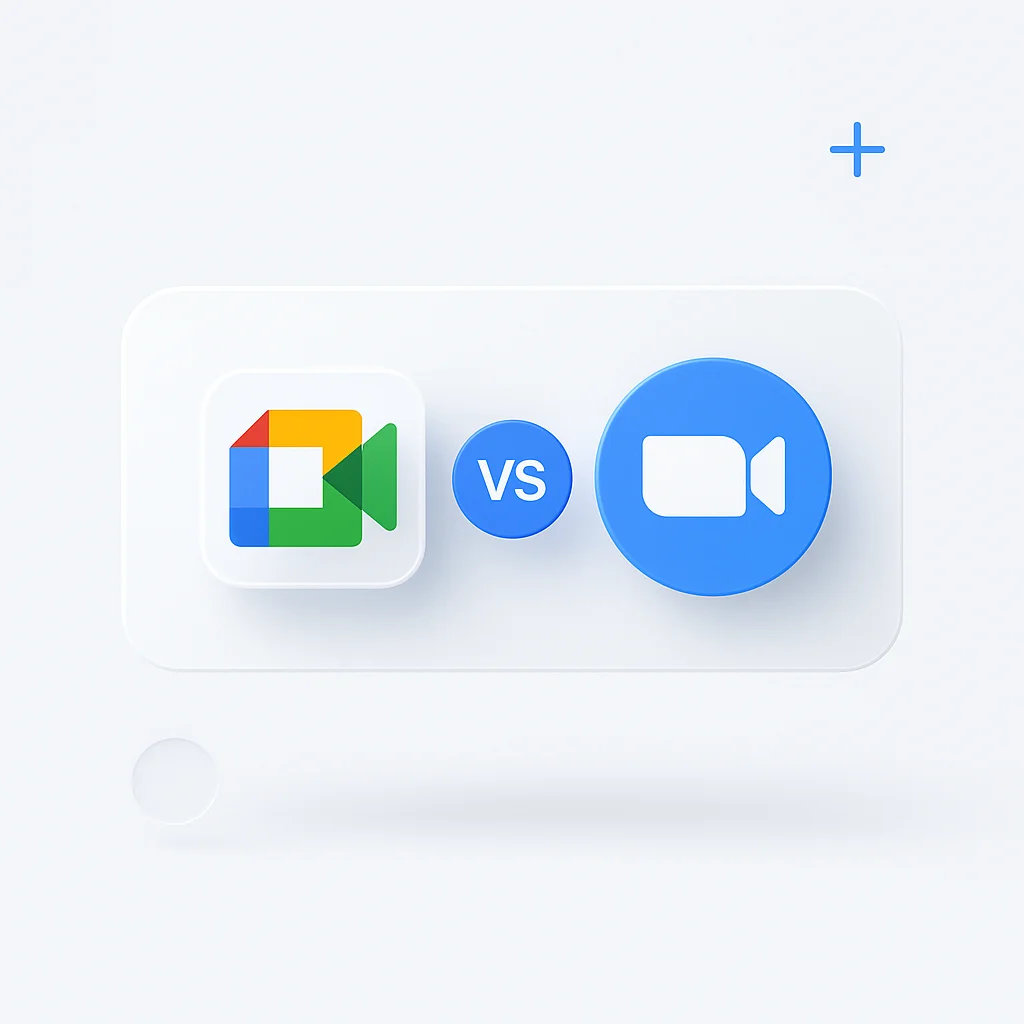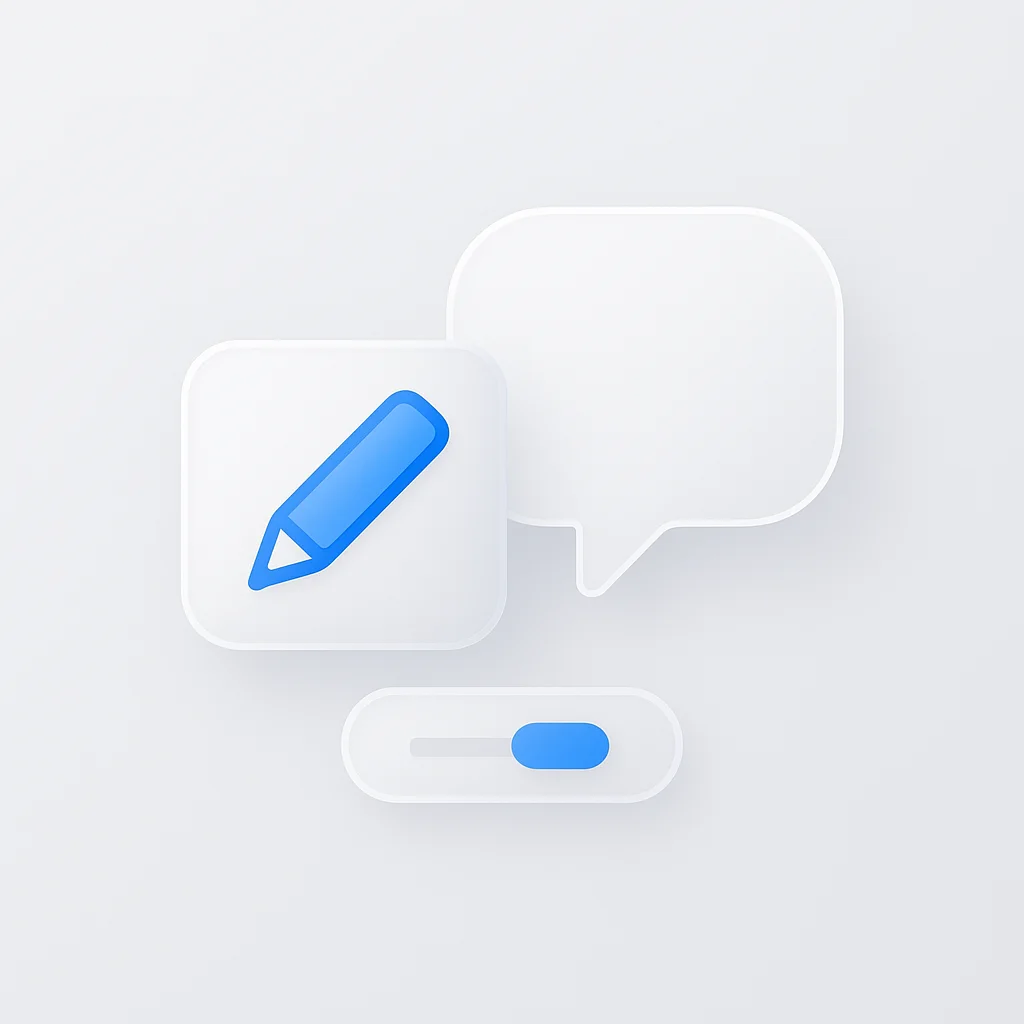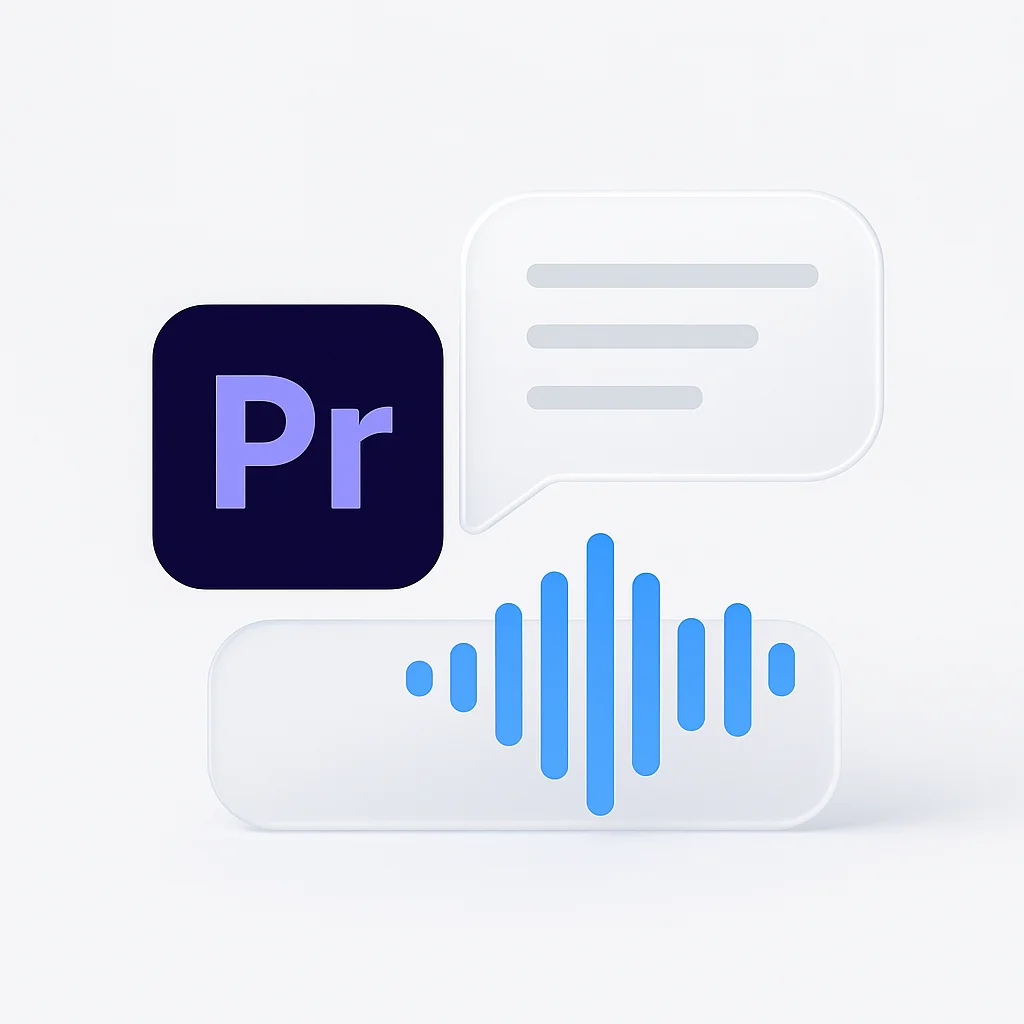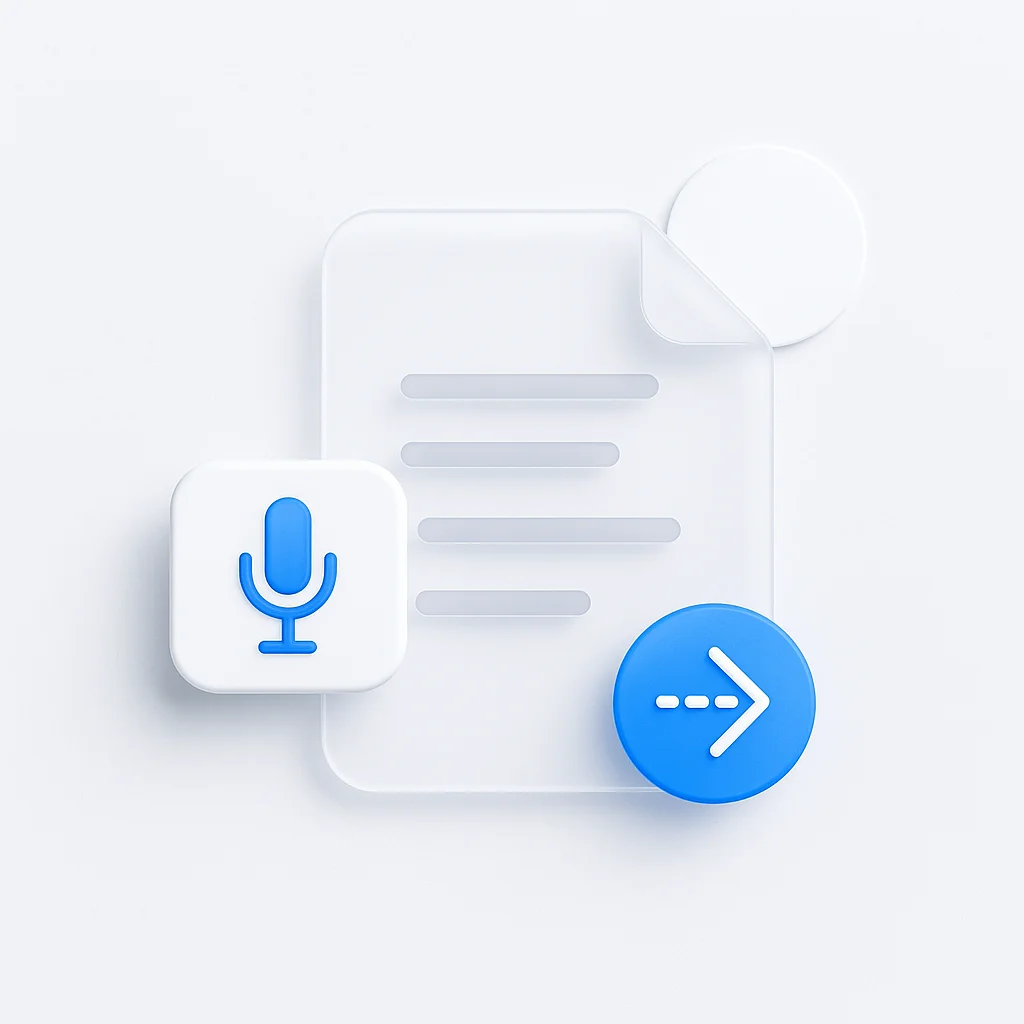Choosing between Google Meet and Zoom can make or break your team’s productivity and communication effectiveness. Both platforms dominate the video conferencing market, but they serve different needs and use cases. This comprehensive comparison will help you decide which platform is better for your specific requirements in 2025. For enhanced meeting productivity, also explore our complete guide to automated meeting notes and how to schedule Google Meet meetings.
The Great Video Conferencing Debate: Meet vs Zoom
The rise of remote work has made video conferencing essential for business success. While both Google Meet and Zoom offer robust solutions, understanding their differences is crucial for making the right choice for your organization. For comprehensive meeting support, consider our best Microsoft Teams AI notetaker and top audio notetakers for 2024.
Market Position and Adoption
Google Meet:
- Integrated into Google Workspace ecosystem
- Over 100 million daily meeting participants
- Strong in education and Google-centric organizations
- Free tier available with Gmail accounts
Zoom:
- Leading standalone video conferencing platform
- Over 300 million daily participants (peak)
- Dominant in enterprise and business markets
- Feature-rich platform with extensive integrations
Google Meet vs Zoom: Core Features Comparison
Meeting Capacity and Duration
Google Meet:
- Free plan: Up to 100 participants, 60-minute limit
- Google Workspace: Up to 500 participants, 24-hour meetings
- Enterprise plans: Up to 1,000 participants with live streaming
- Domain-wide meetings: Enhanced security for organizations
Zoom:
- Free plan: Up to 100 participants, 40-minute limit (3+ participants)
- Paid plans: Up to 1,000 participants, 30-hour meetings
- Webinar add-on: Up to 50,000 attendees
- Zoom Events: Large-scale event hosting capabilities
Winner: Zoom for capacity, Google Meet for simplicity
Video and Audio Quality
Google Meet:
- HD video: 720p standard, 1080p for paying customers
- Audio: High-quality audio with noise cancellation
- Adaptive streaming: Adjusts quality based on bandwidth
- Low-light mode: AI-powered video enhancement
Zoom:
- HD video: 1080p standard, 4K support available
- Audio: Professional-grade audio with advanced noise suppression
- Virtual backgrounds: More sophisticated background options
- Touch up appearance: Real-time beauty filters
Winner: Zoom for video features, tie for audio quality
Screen Sharing and Collaboration
Google Meet:
- Screen sharing: Full screen or specific windows/tabs
- Chrome tab sharing: Unique browser tab sharing feature
- Google Workspace integration: Seamless document collaboration
- Whiteboard: Basic drawing and annotation tools
Zoom:
- Advanced screen sharing: Multiple screens, application sharing
- Annotation tools: Comprehensive markup capabilities
- Whiteboard: Full-featured collaborative whiteboard
- Remote control: Allow others to control your screen
Winner: Zoom for advanced features, Google Meet for simplicity
Ease of Use and User Experience
Setup and Installation
Google Meet:
- No software required: Works entirely in web browsers
- Mobile apps: Available for iOS and Android
- Instant access: Join meetings with just a link
- Integration: Built into Gmail and Google Calendar
Zoom:
- Desktop software: More feature-rich desktop application
- Web client: Available but with limited features
- Mobile apps: Comprehensive mobile experience
- Meeting setup: Requires account for hosting
Winner: Google Meet for simplicity, Zoom for features
User Interface and Navigation
Google Meet:
- Minimalist design: Clean, uncluttered interface
- Google ecosystem: Familiar design for Google users
- Limited controls: Fewer buttons and options
- Mobile-first: Optimized for mobile usage
Zoom:
- Feature-rich interface: More controls and options available
- Customizable layout: Multiple view options
- Professional features: Advanced hosting controls
- Learning curve: More complex but more powerful
Winner: Google Meet for beginners, Zoom for power users
Security and Privacy Features
Security Measures
Google Meet:
- Encryption: End-to-end encryption for calls
- Google security: Benefits from Google’s security infrastructure
- Domain restrictions: Admin controls for organization security
- No meeting IDs: Uses unique meeting codes
Zoom:
- End-to-end encryption: Available for all meetings
- Waiting rooms: Screen participants before entry
- Meeting passwords: Additional layer of security
- Advanced admin controls: Comprehensive security settings
Winner: Tie - both offer robust security
Privacy Considerations
Google Meet:
- Google data practices: Subject to Google’s privacy policies
- No recording by default: Recording requires explicit action
- Data residency: Data stored in Google’s global infrastructure
- GDPR compliance: Meets European privacy standards
Zoom:
- Privacy improvements: Significant enhancements post-2020
- Local data control: Options for data residency
- Recording controls: Granular recording permissions
- Compliance certifications: Multiple industry standards
Winner: Slight edge to Zoom for control options
Integration and Ecosystem
Productivity Suite Integration
Google Meet:
- Google Workspace: Native integration with Gmail, Calendar, Drive
- Instant meetings: Start meetings directly from Gmail
- Calendar scheduling: Seamless Google Calendar integration
- Document collaboration: Real-time Google Docs/Sheets collaboration
Zoom:
- Third-party integrations: Extensive marketplace of integrations
- Calendar plugins: Works with Outlook, Google Calendar, others
- CRM integration: Salesforce, HubSpot, and other business tools
- Productivity apps: Slack, Microsoft Teams, Asana integrations
Winner: Google Meet for Google users, Zoom for diverse ecosystems
Developer and API Support
Google Meet:
- Limited APIs: Basic integration capabilities
- Google Cloud: Integration with Google Cloud services
- Admin APIs: Management through Google Workspace Admin
- Embedded meetings: Basic embedding capabilities
Zoom:
- Comprehensive APIs: Extensive developer platform
- SDK availability: Multiple programming languages supported
- Webhook support: Real-time event notifications
- Custom integrations: Build sophisticated custom solutions
Winner: Zoom for developers and custom integrations
Pricing and Value Comparison
Free Plans
Google Meet:
- 60-minute meetings with up to 100 participants
- Unlimited meetings per day
- Screen sharing and mobile apps included
- Google account required
Zoom:
- 40-minute limit for 3+ participant meetings
- Unlimited 1-on-1 meetings
- Screen sharing and mobile apps included
- No account required to join
Winner: Google Meet for longer free meetings
Paid Plans Comparison
Google Meet (Google Workspace):
- Business Starter: $6/user/month (100 participants)
- Business Standard: $12/user/month (150 participants)
- Business Plus: $18/user/month (500 participants)
- Enterprise: $25/user/month (1,000 participants)
Zoom:
- Basic: Free
- Pro: $14.99/user/month (100 participants)
- Business: $19.99/user/month (300 participants)
- Enterprise: $19.99/user/month (500 participants)
- Enterprise Plus: $25/user/month (1,000 participants)
Winner: Google Meet for value, especially with full workspace suite
Performance and Reliability
Connection Stability
Google Meet:
- Google infrastructure: Leverages Google’s global network
- Adaptive quality: Adjusts to network conditions
- Low bandwidth support: Works well on slower connections
- Uptime: Generally excellent reliability
Zoom:
- Dedicated infrastructure: Purpose-built for video conferencing
- Global data centers: Optimized routing worldwide
- Bandwidth efficiency: Excellent compression algorithms
- Proven reliability: Strong track record for uptime
Winner: Tie - both offer excellent performance
Mobile Experience
Google Meet:
- Native mobile design: Optimized for mobile-first usage
- Battery efficiency: Generally lighter on battery usage
- Cellular optimization: Works well on mobile data
- Simple interface: Easy to use on small screens
Zoom:
- Feature parity: Desktop features available on mobile
- Advanced mobile features: Virtual backgrounds on mobile
- Tablet optimization: Excellent experience on tablets
- Mobile recording: Full recording capabilities on mobile
Winner: Google Meet for simplicity, Zoom for features
Advanced Features and Capabilities
Recording and Transcription
Google Meet:
- Cloud recording: Available on paid plans
- Google Drive storage: Recordings saved to Drive
- Basic transcription: Available in some regions
- Search capability: Recordings searchable in Drive
Zoom:
- Local and cloud recording: Multiple storage options
- Advanced transcription: AI-powered with search
- Recording management: Comprehensive admin controls
- Live transcription: Real-time captions available
Winner: Zoom for recording features
Webinars and Large Events
Google Meet:
- Live streaming: Up to 100,000 viewers (Enterprise)
- YouTube integration: Stream directly to YouTube
- Basic webinar features: Limited interactive capabilities
- Q&A support: Basic question management
Zoom:
- Zoom Webinars: Purpose-built webinar platform
- Registration management: Comprehensive attendee management
- Interactive features: Polls, Q&A, breakout sessions
- Zoom Events: Full event management platform
Winner: Zoom for webinars and events
Breakout Rooms and Collaboration
Google Meet:
- Breakout rooms: Available on paid plans
- Basic management: Simple room creation and assignment
- Google Workspace integration: Access to shared documents
- Limited features: Basic breakout room functionality
Zoom:
- Advanced breakout rooms: Sophisticated management tools
- Pre-assignment: Set up rooms before meetings
- Broadcasting: Send messages to all rooms
- Flexible movement: Easy participant movement between rooms
Winner: Zoom for breakout room features
Use Case Analysis: When to Choose Each Platform
Choose Google Meet If:
You’re a Google Workspace Organization:
- Already using Gmail, Drive, and Google Calendar
- Need seamless integration with Google tools
- Want simple, hassle-free video conferencing
- Budget-conscious with existing Google subscriptions
Your Needs Are Basic:
- Standard team meetings and check-ins
- Occasional client calls
- Simple screen sharing requirements
- Mobile-first usage patterns
You Value Simplicity:
- Minimal learning curve required
- Users prefer simple, clean interfaces
- IT administration should be minimal
- Quick setup and deployment needed
Choose Zoom If:
You Need Advanced Features:
- Comprehensive recording and transcription
- Advanced webinar and event capabilities
- Sophisticated breakout room management
- Custom integrations and API access
You Have Diverse Tool Requirements:
- Multiple calendar and productivity platforms
- Complex integration needs
- Custom workflow requirements
- Enterprise-grade security controls
You’re in Specific Industries:
- Education (advanced classroom features)
- Healthcare (HIPAA compliance options)
- Finance (enhanced security requirements)
- Events and marketing (webinar capabilities)
Making the Right Choice for Your Organization
Decision Framework
Step 1: Assess Your Current Ecosystem
- What productivity tools do you currently use?
- How important is integration with existing systems?
- What’s your current Google vs. Microsoft preference?
Step 2: Evaluate Your Meeting Needs
- What’s your typical meeting size and duration?
- Do you need advanced features like webinars?
- How important are recording and transcription?
Step 3: Consider Your Users
- What’s their technical comfort level?
- Do they prefer simple or feature-rich interfaces?
- How important is mobile usage?
Step 4: Review Budget and Value
- What’s your total cost including related tools?
- Do you need the full workspace suite?
- What’s the cost per feature you’ll actually use?
Migration Considerations
Switching to Google Meet:
- Export existing meeting recordings
- Update calendar integrations
- Train users on Google Workspace tools
- Consider phased rollout approach
Switching to Zoom:
- Evaluate integration requirements
- Plan for user training on advanced features
- Set up admin controls and security policies
- Consider starting with pilot groups
The Verdict: Which Platform Wins?
The answer depends entirely on your specific needs and context:
Google Meet is better for:
- Google Workspace organizations
- Simple, straightforward video conferencing needs
- Budget-conscious teams
- Organizations prioritizing ease of use
- Mobile-first usage patterns
Zoom is better for:
- Feature-rich video conferencing requirements
- Organizations with diverse tool ecosystems
- Advanced recording and transcription needs
- Webinars and large-scale events
- Custom integrations and API usage
The Real Winner: The platform that best fits your organization’s specific needs, user preferences, and budget constraints.
Future Considerations
Emerging Trends
AI and Machine Learning:
- Both platforms investing heavily in AI features
- Improved transcription and translation capabilities
- Smart meeting summaries and action items
- Predictive quality and performance optimization
Virtual and Augmented Reality:
- Zoom exploring VR meeting experiences
- Google investigating AR integration opportunities
- Immersive collaboration becoming more important
- Hardware partnerships expanding capabilities
Enhanced Security:
- Zero-trust security models
- Advanced threat detection
- Improved compliance features
- Better data residency controls
Conclusion
Both Google Meet and Zoom are excellent video conferencing platforms, but they excel in different areas. Google Meet shines in simplicity, integration with Google Workspace, and value for money. Zoom leads in advanced features, customization options, and specialized use cases like webinars and large events.
The key to making the right choice is honest assessment of your organization’s needs, existing tool ecosystem, and user preferences. Don’t choose based on features you’ll never use, but ensure you have room to grow into more advanced capabilities as your needs evolve.
Remember that the best video conferencing platform is the one your team will actually use effectively. Sometimes, the simpler solution that everyone adopts is better than the feature-rich platform that sits unused.
Pro Tip: Consider running a pilot program with both platforms for 30 days. This hands-on experience with your actual use cases will provide much better insights than any comparison can offer.



